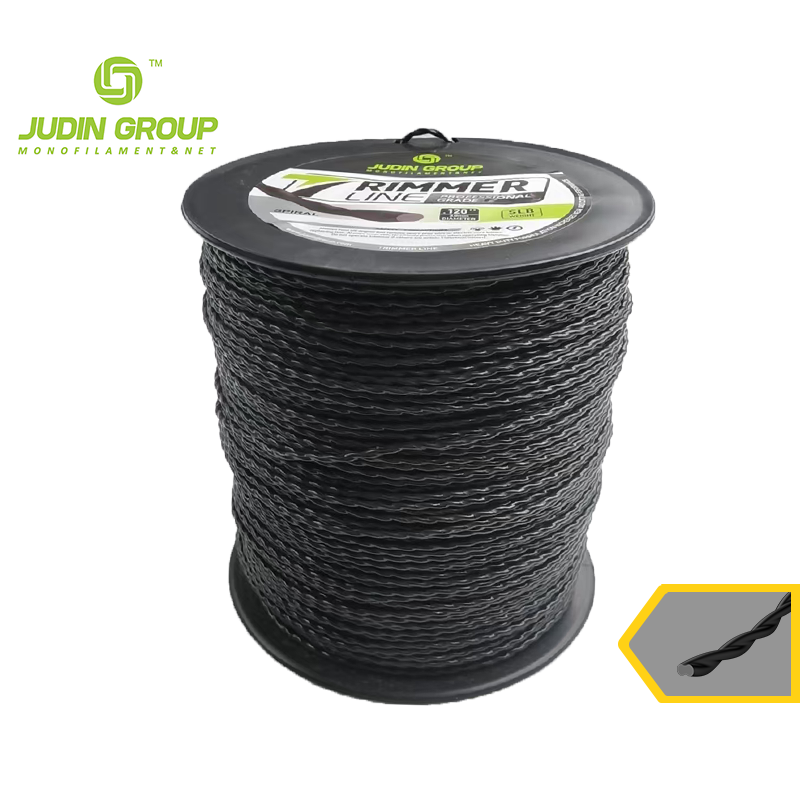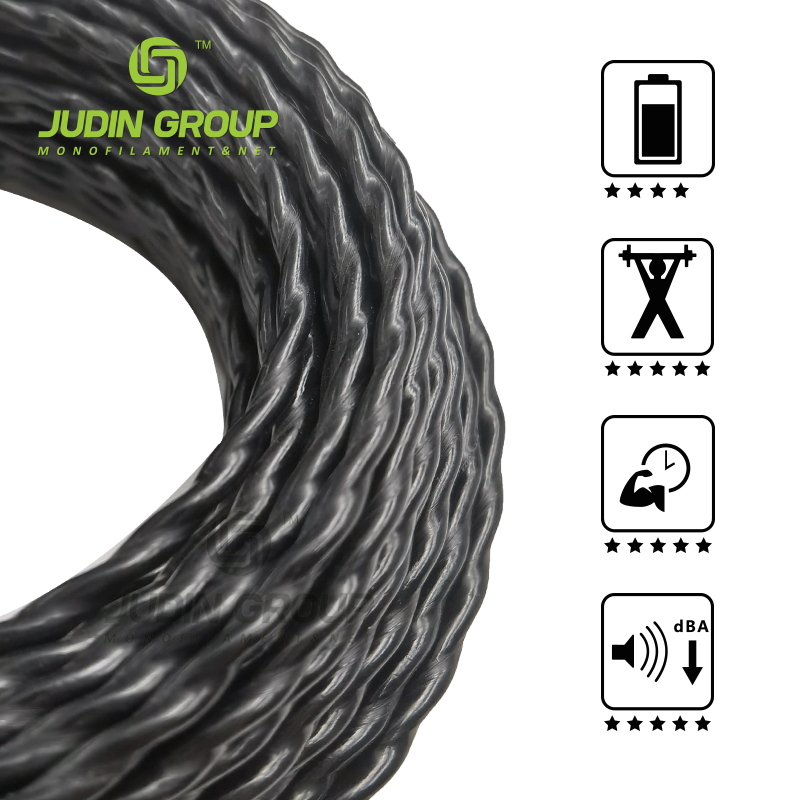Tangled trimmer lines can turn a simple yard job into a frustrating mess. You know the feeling—spending more time fixing the line than actually trimming. The good news? Keeping your trimmer line in top shape doesn’t have to be complicated. With the right maintenance, you’ll get smoother cuts and fewer tangles every time.
Key Takeaways
- Wind the trimmer line by following the arrow on the spool. This stops tangles and overlaps.
- Pick the correct size and type of trimmer line for your tool. This keeps it running well and avoids jams.
- Check your trimmer line often and replace it if damaged. This keeps it working smoothly and avoids annoying stops.
Causes of Trimmer Line Tangling
Tangled trimmer lines can be a real headache, especially when you’re trying to get your yard work done quickly. Understanding what causes these tangles is the first step to preventing them. Let’s dive into the most common culprits.
Improper Winding Techniques
How you wind the trimmer line onto the spool matters more than you might think. If the line isn’t wound tightly or evenly, it can overlap and create knots. This often happens when you rush through the process or don’t follow the manufacturer’s instructions.
Here’s a tip: Always wind the line in the direction indicated on the spool. If you go the wrong way, the line won’t feed properly, and tangles are almost guaranteed. Take your time and make sure the line sits snugly without crossing over itself.
Incorrect Line Size or Type
Using the wrong size or type of trimmer line can also lead to tangling. If the line is too thick or too thin for your trimmer, it won’t fit or function as intended. This mismatch can cause the line to jam or tangle during use.
Check your trimmer’s manual to find the recommended line size. For example, Judin’s .120 inch Spiral Spool Trimmer Line comes in various sizes, so you can pick the one that suits your equipment. Choosing the right line ensures smoother performance and fewer tangles.
Poor-Quality Materials
Not all trimmer lines are created equal. Cheap, low-quality lines are more likely to break, fray, or tangle. They might save you a few bucks upfront, but they’ll cost you time and frustration in the long run.
Investing in a high-quality line, like Judin’s professional-grade trimmer line, can make a big difference. Made from durable nylon, it resists wear and tear while reducing the chances of tangling. Plus, its spiral design helps channel debris away, keeping your trimming sessions hassle-free.
Pro Tip: Always inspect the line before use. If it looks brittle or damaged, replace it to avoid unnecessary tangles.
Preventing Tangling in Trimmer Lines
Tangled trimmer lines can slow you down, but the good news is that you can prevent most issues with a few simple steps. Let’s explore how you can keep your trimmer line running smoothly.
Proper Winding and Loading Methods
Winding the trimmer line correctly onto the spool is one of the easiest ways to avoid tangles. If you’ve ever rushed through this step, you know how quickly things can go wrong. To get it right, follow these tips:
- Check the spool direction: Most spools have an arrow showing the correct winding direction. Always follow it to ensure the line feeds properly during use.
- Keep the tension steady: As you wind the line, apply gentle but consistent tension. Loose winding can cause the line to overlap and tangle.
- Avoid crossing the line: Make sure each layer of the line sits neatly next to the previous one. Overlapping layers can lead to knots and feeding problems.
Taking a few extra minutes to wind the line carefully can save you a lot of frustration later. Think of it as setting the foundation for a hassle-free trimming session.
Choosing the Right Line Type and Size
Not all trimmer lines are created equal, and using the wrong one can lead to tangling or even damage to your equipment. Here’s how you can make the right choice:
- Match the size to your trimmer: Check your trimmer’s manual for the recommended line diameter. Using a line that’s too thick or too thin can cause feeding issues. For example, Judin’s .120 inch Spiral Spool Trimmer Line offers various sizes to fit different trimmers.
- Consider the material: High-quality nylon lines, like those from Judin, are more durable and less prone to tangling. They’re designed to handle tough weeds and uneven terrain without breaking or jamming.
- Pick the right shape: Spiral-shaped lines are excellent for reducing resistance and improving efficiency. They also help channel debris away, which minimizes tangling.
Choosing the right trimmer line isn’t just about performance—it’s about making your job easier. When you use the right line, you’ll spend less time fixing tangles and more time enjoying a perfectly trimmed lawn.
Avoiding Overfilling the Spool
It might be tempting to load as much line as possible onto the spool, but overfilling it can cause more harm than good. Here’s why you should avoid it:
- Prevents smooth feeding: When the spool is too full, the line doesn’t have enough room to move freely. This can lead to jams and tangles.
- Increases wear and tear: Overfilled spools put extra strain on your trimmer’s motor, which can shorten its lifespan.
- Makes reloading harder: A tightly packed spool is more difficult to rewind when the line runs out.
To avoid these issues, stick to the manufacturer’s guidelines for how much line to load. If you’re unsure, a good rule of thumb is to leave about a quarter-inch of space between the line and the edge of the spool. This gives the line enough room to move without getting tangled.
Quick Tip: If you’re using a spiral trimmer line like Judin’s, its anti-tangling design already gives you an edge. Combine that with proper loading, and you’ll have a winning setup for tangle-free performance.
Maintenance Tips for Trimmer Line Longevity
Keeping your trimmer line in great shape doesn’t take much effort, but it can make a big difference in how well your equipment performs. Here are some easy maintenance tips to help you get the most out of your trimmer line.
Cleaning the Trimmer Head Regularly
A clean trimmer head is key to smooth operation. Dirt, grass, and debris can build up over time, causing the line to jam or wear out faster. To keep things running smoothly:
- Remove the spool: Take out the spool and wipe away any dirt or grass clippings.
- Check for buildup: Look for debris stuck in the trimmer head and clear it out with a brush or cloth.
- Inspect the line path: Make sure the line feeds freely through the trimmer head without obstructions.
Quick Tip: Cleaning the trimmer head after every use prevents buildup and keeps your trimmer line working efficiently.
Storing Lines in Optimal Conditions
How you store your trimmer line matters more than you might think. Poor storage can make the line brittle or prone to tangling. To keep your line in top condition:
- Avoid direct sunlight: UV rays can weaken the nylon material over time. Store the line in a cool, shaded area.
- Keep it dry: Moisture can cause the line to degrade. Use a sealed container or bag to protect it from humidity.
- Maintain flexibility: If the line feels stiff, soak it in water for a few hours before use. This restores its flexibility and reduces breakage.
Proper storage ensures your trimmer line stays durable and ready for action whenever you need it.
Inspecting and Replacing Damaged Lines
Regular inspections help you catch problems before they turn into bigger issues. Damaged lines can lead to tangling or uneven cuts, so it’s important to replace them when needed. Here’s what to do:
- Check for wear: Look for frayed or brittle sections of the line. These are signs it’s time for a replacement.
- Replace as needed: Don’t wait for the line to snap during use. Swap it out as soon as you notice damage.
- Use high-quality replacements: Opt for durable options like Judin’s .120 inch Spiral Spool Trimmer Line for better performance and fewer tangles.
Pro Tip: Keeping spare trimmer lines on hand saves you time and ensures uninterrupted trimming sessions.
Troubleshooting Tangling Issues
Even with proper maintenance, tangling can still happen. Don’t worry—most issues are easy to fix if you know what to look for. Let’s go over some common problems and how you can solve them.
Resolving Tangled Lines During Use
Tangled lines during trimming can be frustrating, but they’re often caused by simple mistakes. Here’s how you can fix them:
- Stop the trimmer immediately: Continuing to use it can worsen the tangle.
- Inspect the spool: Open the trimmer head and check for knots or overlaps.
- Rewind the line: If it’s tangled, remove the line and rewind it carefully. Follow the spool’s directional arrow to avoid future tangles.
Quick Tip: If you’re using a spiral trimmer line like Judin’s, its anti-tangling design can help reduce these issues.
Fixing Spool Jamming Problems
A jammed spool can stop your trimmer in its tracks. To fix this:
- Remove the spool: Take it out and check for debris or broken line pieces.
- Clear obstructions: Use a brush or cloth to clean the spool and trimmer head.
- Reload the line: Make sure the line is wound evenly and not overfilled.
If the problem persists, check your trimmer’s manual for troubleshooting tips specific to your model.
Adjusting the Trimmer Head Settings
Sometimes, tangling happens because the trimmer head isn’t set up correctly. Adjusting it can make a big difference:
- Check the tension: If the line feeds too loosely, tighten the spool slightly.
- Inspect the cutting blade: A dull blade can cause uneven cuts, leading to tangles. Replace it if needed.
- Test the feed mechanism: Ensure the line advances smoothly when you tap the head.
Note: Regularly maintaining your trimmer head keeps it running smoothly and reduces tangling risks.
Tangled trimmer lines don’t have to ruin your yard work. By understanding the causes—like improper winding or poor-quality materials—and following prevention tips, you can avoid most issues. Regular maintenance and quick troubleshooting keep your trimmer running smoothly. Apply these tips, and you’ll enjoy hassle-free, efficient trimming every time!
 |
 |
 |
FAQ
What is the best way to store trimmer lines?
Store them in a cool, dry place away from sunlight. Use a sealed container to protect them from moisture and maintain flexibility.
How often should I replace my trimmer line?
Replace it when you notice fraying, brittleness, or uneven cuts. Regular inspections help you catch damage early and avoid interruptions during trimming.
Can I use any trimmer line with my equipment?
No, always check your trimmer’s manual for the recommended line size and type. Using the wrong line can cause tangling or damage to your trimmer.
Pro Tip: Judin’s .120 inch Spiral Spool Trimmer Line offers multiple sizes to fit various trimmers, ensuring smooth and efficient performance.
Post time: May-29-2025







